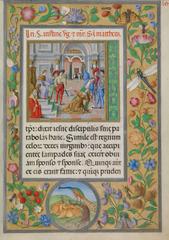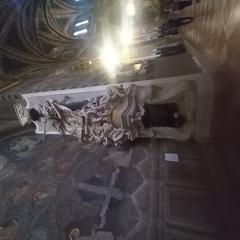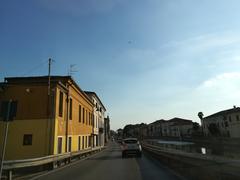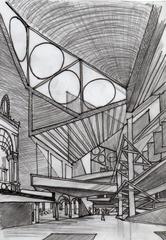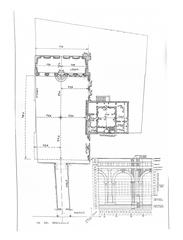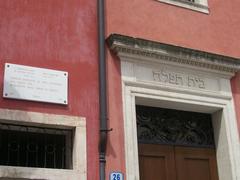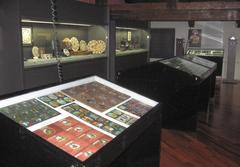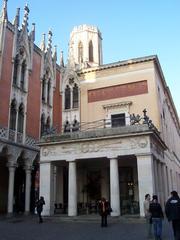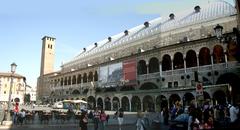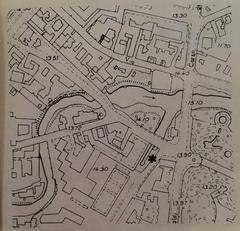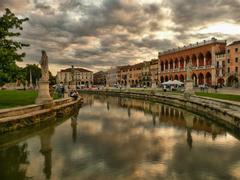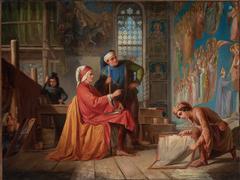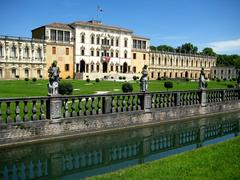University of Padua Visiting Hours, Tickets, and Historical Sites Guide
Date: 14/06/2025
Introduction
The University of Padua (Università degli Studi di Padova), established in 1222, stands as a beacon of academic freedom, scientific innovation, and Renaissance humanism. As one of the world’s oldest universities, its motto “Universa Universis Patavina Libertas” (“Paduan Freedom is Universal for Everyone”) reflects a centuries-old commitment to open inquiry and inclusiveness. Visiting Padua offers an opportunity to walk in the footsteps of luminaries such as Galileo Galilei and Elena Cornaro Piscopia, while exploring architectural masterpieces like Palazzo Bo and the world’s oldest academic botanical garden. This comprehensive guide provides the essential details on visiting hours, ticketing, accessibility, and travel tips to help you experience the University’s rich heritage.
For the latest schedules and booking options, consult the official University of Padua website.
Table of Contents
- Historical Overview
- Visiting the University of Padua
- Architectural and Cultural Highlights
- Nearby Attractions
- Frequently Asked Questions (FAQ)
- Conclusion and Visitor Resources
- Sources
Historical Overview
Founding and Early Development (13th–15th Centuries)
The University of Padua was founded in 1222 by scholars seeking greater academic independence than was possible at Bologna. Initially focused on law, it quickly expanded to medicine, philosophy, and the arts, drawing students and teachers from across Europe. Its foundational spirit of liberty set the stage for a tradition of innovation and inclusiveness.
Renaissance Flourishing and Scientific Innovation
The Renaissance marked Padua as a center of learning. Here, Galileo Galilei taught mathematics between 1592 and 1610, profoundly influencing the scientific revolution. The Anatomical Theatre, built in 1594, became the world’s first permanent structure for medical dissections, revolutionizing anatomy studies. Notably, Elena Cornaro Piscopia became the first woman in the world to earn a university degree at Padua in 1678.
Modern Expansion and Global Influence
Over the following centuries, the University adapted and expanded, embracing new disciplines and establishing research centers. The Palazzo Bo became its headquarters in 1493, symbolizing the university’s endurance and intellectual vibrancy. Today, Padua is a member of the Coimbra Group and hosts around 60,000 students across diverse academic domains.
Visiting the University of Padua: Practical Information
Palazzo Bo
Palazzo Bo is the university’s historical and administrative heart. Guided tours are essential for experiencing its highlights, including the Aula Magna, Anatomical Theatre, and Hall of the Forty.
- Visiting Hours: Tuesday to Saturday, 9:00 AM – 5:00 PM (closed Mondays and public holidays; hours may vary seasonally).
- Tickets: Adults €10–€15; discounts for students, seniors, and groups. Guided tours are highly recommended and often required.
- Booking: Reserve online via the official website or at the tourist office.
Highlights:
- Aula Magna: The grand hall where Galileo lectured.
- Anatomical Theatre: The world’s oldest permanent anatomical theatre, a marvel for medical history enthusiasts.
- Hall of the Forty: Portraits of international alumni who shaped global scholarship.
Orto Botanico di Padova (Botanical Garden)
Founded in 1545, this is the oldest university botanical garden still at its original site and a UNESCO World Heritage Site.
- Hours: Open daily, usually 9:00 AM – 7:00 PM, with extended hours in spring and summer.
- Tickets: Around €5; separate from Palazzo Bo admission.
- Features: Renaissance garden layout, rare medicinal plants, and the modern Biodiversity Garden.
Museum of the History of Medicine (MUSME)
An interactive museum highlighting Padua’s pivotal role in medical science.
- Hours & Tickets: Check MUSME’s official website for current information.
- Exhibits: Thematic rooms, hands-on displays, and family-friendly activities.
Specola Museum of Astronomy
Located in a historical observatory tower, the Specola Museum explores Padua’s astronomical legacy.
- Visiting: Included in select university walking tours (advance booking required).
- Features: Antique telescopes and panoramic city views.
General Accessibility
- Physical Access: Most main sites (Palazzo Bo, Botanical Garden) offer ramps, elevators, and accessible restrooms. Some historic sections may have limited access due to preservation needs. Contact the visitor center ahead of time for specific accommodations.
- Guided Tours: Available in Italian and English daily; other languages upon request.
Travel Tips and Special Events
- Getting There: The university is centrally located, a 15-minute walk from Padua’s main train station. City trams, buses, and taxis serve the area. If driving, be mindful of the city’s ZTL (Limited Traffic Zone); use Park Rabin or Padova Centro Park for parking.
- Best Times to Visit: Spring and autumn offer mild weather and manageable crowds. Early mornings or late afternoons provide a quieter experience.
- Special Events: Look for seasonal highlights such as the Solstitium Bovis night tours during the summer solstice, public lectures, and temporary exhibitions.
- Nearby Dining: Try the historic Caffè Pedrocchi, a renowned literary café adjacent to Palazzo Bo.
Architectural and Cultural Highlights
- Palazzo Bo: Renaissance architecture, ornate halls, and frescoes.
- Anatomical Theatre: Unique oval design for immersive anatomical demonstrations.
- Botanical Garden: Historic walled gardens and modern greenhouses.
- University Courtyards: Vibrant social spaces alive with academic tradition.
Nearby Attractions
- Scrovegni Chapel: Giotto’s fresco masterpiece, a 10-minute walk away.
- Prato della Valle: One of Europe’s largest squares, ideal for relaxation.
- Basilica of Saint Anthony: Major pilgrimage site and architectural marvel.
- La Specola Observatory: Explore astronomy’s history in a medieval tower.
Frequently Asked Questions (FAQ)
Q: How do I book tickets for the University of Padua attractions?
A: Reserve online via the University’s official visitor portal or by phone/email. Advance booking is recommended, especially during peak seasons.
Q: Are guided tours available in multiple languages?
A: Yes, tours are offered in Italian and English; other languages require prior arrangement.
Q: Is the university accessible for visitors with disabilities?
A: Most main sites are accessible, with some limitations in historic areas. Contact the university in advance for specific needs.
Q: Can I take photos inside the university?
A: Photography is generally allowed in courtyards and some public areas. Restrictions may apply inside certain halls; always check with your guide.
Q: What is the duration of a typical visit?
A: Guided tours last approximately 45–60 minutes; plan for 1.5–2 hours to explore fully. Extra time is needed for the Botanical Garden or museums.
Q: Are combination tickets available?
A: Occasionally, combination tickets for the university, Botanical Garden, and local museums are offered. Check the official website for current options.
Conclusion and Visitor Resources
A visit to the University of Padua is an immersion in centuries of scholarship, architectural beauty, and scientific breakthroughs. From the majestic halls of Palazzo Bo to the tranquil paths of the Botanical Garden, every corner tells a story of curiosity and discovery. Book your tour in advance, use digital guides like the VisitUniPD or Audiala app, and take time to enjoy the university’s surroundings in the heart of Padua.
For more details, consult the official University of Padua website and explore related guides to plan a seamless and enriching visit. Follow the university on social media for updates on events, exhibitions, and visitor services.
Sources and Further Reading
- University of Padua official visitor information, 2025
- Visit Padua Historical Sites Guide, 2025
- Travel Connect Experience – Things to Do in Padua, Italy, 2025
- Miss Tourist – Things to Do Padua, Italy, 2025
- Triphobo – University of Padua Visitor Guide, 2025
- TravelFolk – Things to Do in Padua, Italy, 2025
- Facts.net – University of Padua Landmarks, 2025
